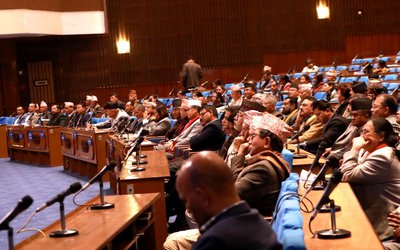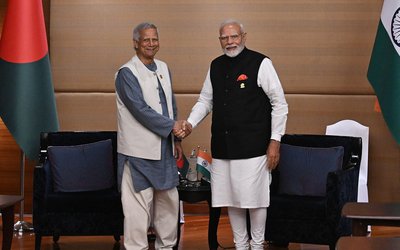More on News





The World Bank said it was cautiously optimistic about economic prospects in South Asia in 2014 because of growing exports and investment as it emphasized that the risks to growth were becoming more domestic, including an increasingly vulnerable banking sector.
In its twice-a-year ‘South Asia Economic Focus”, the World Bank forecast that economic growth would rise to 5.8 percent in 2015 from 5.2 percent this year and 4.8 percent last year. South Asian countries – which include Afghanistan, Bangladesh, Bhutan, India, Maldives, Nepal, Pakistan, and Sri Lanka – appeared to have largely recovered from last year’s financial turmoil caused by changes in U.S. Federal Reserve monetary policy. Many were rebuilding currency reserves while curbing current account deficits.
“But these successes on the external side were accompanied by looming problems in the domestic economy. Economic growth could be held back by unstable banking sectors, inflation, fiscal deficits and debt, and persistent shortfalls in energy and transport infrastructure across the region,” says press released issued by the World Bank
“Now that external pressures are waning, it’s time to refocus on addressing problems within the economies in South Asia so that countries can boost growth and reduce poverty,” said South Asia Chief Economist Martin Rama. “The good news is that across South Asia there is a growing momentum in support of reforms to increase growth because governments recognize this is the best way to overcome poverty.”
Over this year, the report saw a strengthening of economic growth for most South Asian countries.
The region’s largest economy, India, would see growth rise to 5.7 percent in fiscal year (FY) 2014 from 4.8 percent last fiscal year with activity receiving a boost from a more competitive exchange rate and many large investment projects going ahead. Pakistan’s economic growth could increase to 4 percent this fiscal year from 3.6 percent in FY2013 as its economy benefitted from a reduction in electricity blackouts, resilient remittance flows from Pakistani workers abroad, rebounding manufacturing exports and a more buoyant services sector. Nepal was recovering from a difficult year affected by setbacks in the agricultural sector and with its government budget. Helped by strong remittance flows boosting consumption and the services sector, the economy should grow by 4.5 percent in FY2014 after 3.6 percent in FY2013. Sri Lanka would continue to grow at 7.3 percent this year as the economy was sustained by new capacity from infrastructure investments and rebuilding after the country’s recent conflict.
Economic activities recovered in the second half of FY14 in Bangladesh, driven by resilient exports and domestic demand, following setbacks suffered in the first half due to political uncertainty and turmoil. A recovery in export growth and increases in public expenditure are likely to help achieve 5.4 percent GDP growth in FY14, slightly lower than last year’s 6 percent.
The economy in Afghanistan will be weighed down by the persistent uncertainty caused by the withdrawal this year of international forces and the subsequent reduction in foreign aid for the economy. In addition, the country’s agricultural sector’s output has declined. Economic growth was therefore projected to fall to 3.2 percent this year after 3.6 percent in 2013. Depending on security and whether agriculture rebounds and mining output increases, Afghanistan could see growth recover in 2015 and 2016 to around five percent.
The report made a point of focusing on the banking sector because of its centrality for South Asia’s economic stability and growth.
“We’ve studied banks in India, Nepal, and Pakistan because they are fairly representative of the situation of banks across the region as a whole,” said South Asia Region Economist Markus Kitzmuller. “Policy makers need to take these vulnerabilities seriously because a problem in the banking sector can easily put pressure on already constrained government budgets and have a damaging impact on the wider economy.”
In India, the problem is the banking sector’s growing exposure to company debt. The fear here is that this could ultimately affect the government’s finances through its ownership of state banks and the need to prop up distressed but systemically important banks. Pakistan’s vulnerability is related to government debt, not corporate debt. Its banks are big owners of short term government debt without inherent risks being correctly reflected. In Nepal, banks are not lending and therefore not supporting productive investment in the economy.







